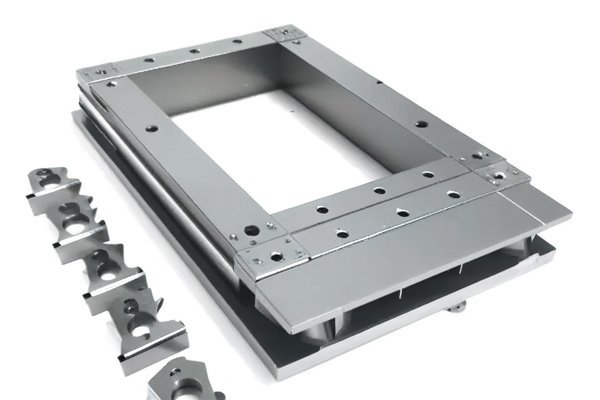Welcome to YL Machining’s in-depth exploration of two distinguished materials in the realm of CNC processing: Polyoxymethylene (POM) and Polyether Ether Ketone (PEEK). Today, we embark on a journey through the nuances of these materials, specifically focusing on their applications in high-end manufacturing.
As we dive into the heart of this comparison, you’ll gain insights on their mechanical properties, processing methods, suitability for various applications, and more. Whether you are a manufacturer, an engineer, or a curious mind eager to understand the intricacies of machining, buckle up! This article promises to arm you with the knowledge you need to navigate the complexities of CNC processing.
1.1 What is POM?
Polyoxymethylene, commonly known as POM or acetal, is a thermoplastic polymer. Its robust mechanical properties, low friction, and excellent dimensional stability make it a popular choice in the manufacturing industry, particularly in the production of precision parts.
Key Characteristics of POM:
1.2 What is PEEK?
Polyether Ether Ketone (PEEK) stands as a high-performance thermoplastic polymer used in advanced engineering applications. Due to its superior mechanical, thermal, and chemical resistance, PEEK has expanded its footprint across numerous high-end applications, including aerospace, automotive, and medical industries.
Key Characteristics of PEEK:
CNC processing, or Computer Numerical Control processing, plays a pivotal role in shaping materials with precision. POM and PEEK, although both thermoplastics, exhibit distinct behaviors during the CNC processing stages.
2.1 CNC Processing of POM
Processing POM requires specific techniques to exploit its beneficial properties.
Common CNC Techniques for POM:
Considerations in CNC Processing of POM:
2.2 CNC Processing of PEEK
Processing PEEK can be more challenging due to its thermal stability and hardness.
Common CNC Techniques for PEEK:
Considerations in CNC Processing of PEEK:

As we assess the functionality of POM and PEEK, certain high-end applications emerge as focal points for comparison.
3.1 Automotive Applications
POM Applications in Automotive:
PEEK Applications in Automotive:
3.2 Aerospace Applications
POM Applications in Aerospace:
PEEK Applications in Aerospace:
3.3 Medical Applications
POM Applications in Medical:
PEEK Applications in Medical:
When evaluating options, the cost is always a critical factor.
4.1 Material Cost
Generally, POM is more cost-effective than PEEK. The price of raw PEEK material is significantly higher due to its processing complexity and the advanced properties it offers.
4.2 Processing Cost
Processing costs vary widely between the two. While POM is easier and quicker to process, leading to reduced machine time, PEEK requires specialized machinery and tooling to mitigate its hard nature.
4.3 Life-Cycle Cost
Although PEEK is initially more expensive, its durability and longevity may result in lower life-cycle costs, especially in applications where material replacement is frequent.
Choosing between POM and PEEK ultimately hinges on the specific requirements of your project. Here are some guiding questions that can lead to better decision-making:
As we conclude our analysis, one thing is clear – both POM and PEEK hold impressive capabilities in the CNC processing arena. Your selections must align with performance criteria and project demands.
At YL Machining, we are committed to bringing clarity to your material choices, simplifying complex processes, and unlocking new potentials within your designs. Whether your next project leans toward POM or PEEK, rest assured that we’re here to support your CNC processing needs with precision and expertise.
Thank you for investing your time in our exploration of POM and PEEK. May your innovative projects shine brightly ahead!






